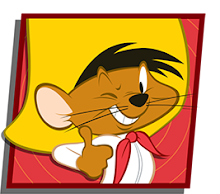The December 2001 uprising was a period of civil unrest and rioting in Argentina, which took place during December 2001, with the most violent incidents taking place on December 19 and December 20 in the capital, Buenos Aires, Rosario and other large cities around the country.
The uprising was a predominantly middle-class uprising against the government of President Fernando de la Rúa, who had failed to contain the economic crisis that was going through its third year of recession. Since 1991, the Argentine peso was at a fixed exchange rate with the US dollar. The dollarization had been instrumental to overcome the chronic hyperinflation bursts of the late 1980s, but almost entirely deprived Argentina of control over its monetary policy, and a sudden revaluation of the dollar in 1997 ended up harming exports, which were the only important source of foreign currency at the time.
De la Rúa's economic policies suffered a severe blow in March 2001 when Economy Minister José Luis Machinea resigned from office. He was briefly replaced by the then-Defense Minister Ricardo López Murphy, who himself was forced to resign following negative reception to his shock program. After only two weeks in office, López Murphy was replaced by Domingo Cavallo, who had previously served as Economy Minister between 1991 and 1996, and who was widely credited to be the man that took Argentina out of hyperinflation.
Cavallo took to administer the country's economy, establishing new taxes and special agreements with certain sectors of the Argentine industrial establishment. He also took to restructure Argentina's massive foreign debt in an operation known locally as the megacanje ("mega-exchange", i. e. an exchange of debt bonds for others at more advantageous conditions). From the first moment, there were allegations of corruption and money laundering about the megacanje.
De la Rúa's political situation was also precarious. His arrival to power in 1999 had been possible thanks to the Alliance for Work, Justice and Education, a coalition formed by the Radical Civic Union and the FrePaSo, which managed to defeat the incumbent Justicialist Party (the Peronists) in that year's presidential elections. However, the Alliance (as it was known) failed to achieve a majority in the Senate and the Chamber of Deputies, and lost the provincial elections to the Peronists, who then remained in charge of large and critical districts such as the Buenos Aires, Córdoba and Santa Fe provinces.
The government coalition was strained from the first moment; the FrePaSo leaders resented being "junior members" of the government (being forced to that position after losing their bid to the Governorship of Buenos Aires), while the Radicals were divided between their left- and right-leaning factions (De la Rúa was a leader of the party's conservatives), especially regarding economic policy. In late 2000 a political scandal broke out when it was reported that SIDE, Argentina's intelligence service, had paid massive bribes to a number of senators to approve a controversial Labor Reform Act. The head of SIDE, Fernando de Santibañes, was a personal friend of De la Rúa. The crisis came to a head on October 2000 when Vice President Carlos Álvarez resigned, citing De la Rúa's unwillingness to tackle corruption.
The March 2001 crisis (see above) also caused the resignation of all the FrePaSo Cabinet ministers, leaving de la Rúa without political support. The congressional elections of October 2001 were a disaster for the government, which lost many of its seats in the Senate and the Chamber of Deputies to the Peronists. The election results marked also a growing unrest within Argentina's voters, who took to cast millions of null or blank votes. The Peronists seized the opportunity to appoint Senator Ramón Puerta to be President Pro-Tempore of the Argentine Senate, a situation which added to De la Rúa's political weakness since in the Argentine system the President Pro-Tempore of the Senate is next in line for the Presidency after the Vice President. With no Vice President of its own, Puerta's designation meant that De la Rúa had a virtual Peronist Vice President.
Social unrest was also growing. Since the late 1990s, protest movements had formed in Argentina, notably the piqueteros ("picketeers"), initially made up of unemployed workers. The piqueteros blockaded major roads and highways demanding government subsidies and other welfare measures. They featured prominently during the March 2001 crisis.
This entire crisis came to a head on November 29, 2001, when Argentines took to banks and financial institutions to withdraw millions of pesos and dollars from their accounts. Had the withdrawal continued, Argentina's entire banking system would have collapsed.
Saturday, May 26, 2012
Queremos Paz
from Wikipedia:
Subscribe to:
Post Comments (Atom)







Off topic....Have you seen the latest on Chavez? Excerpt:
ReplyDelete...Venezuelan President Hugo Chavez has metastatic rhabdomyosarcoma, an aggressive cancer that has "entered the end stage". The information and the quote come from a highly respected source close to Chavez and who is in a position to know his medical condition and history. This source says the prognosis is dire and that Chavez is now not expected to live "more than a couple of months at most." Chavez is running for re-elec tion in Venezuela but several sources--including the one who revealed the exact kind of cancer-- have told me that they believe it is doubtful the dictator will live to see the results....
The election is in October, that's only a little over four month's away. Regardless, he'll be re-elected and some patsy will serve out his term. A patsy with control over some of the largest oil reserves in the world.
ReplyDelete